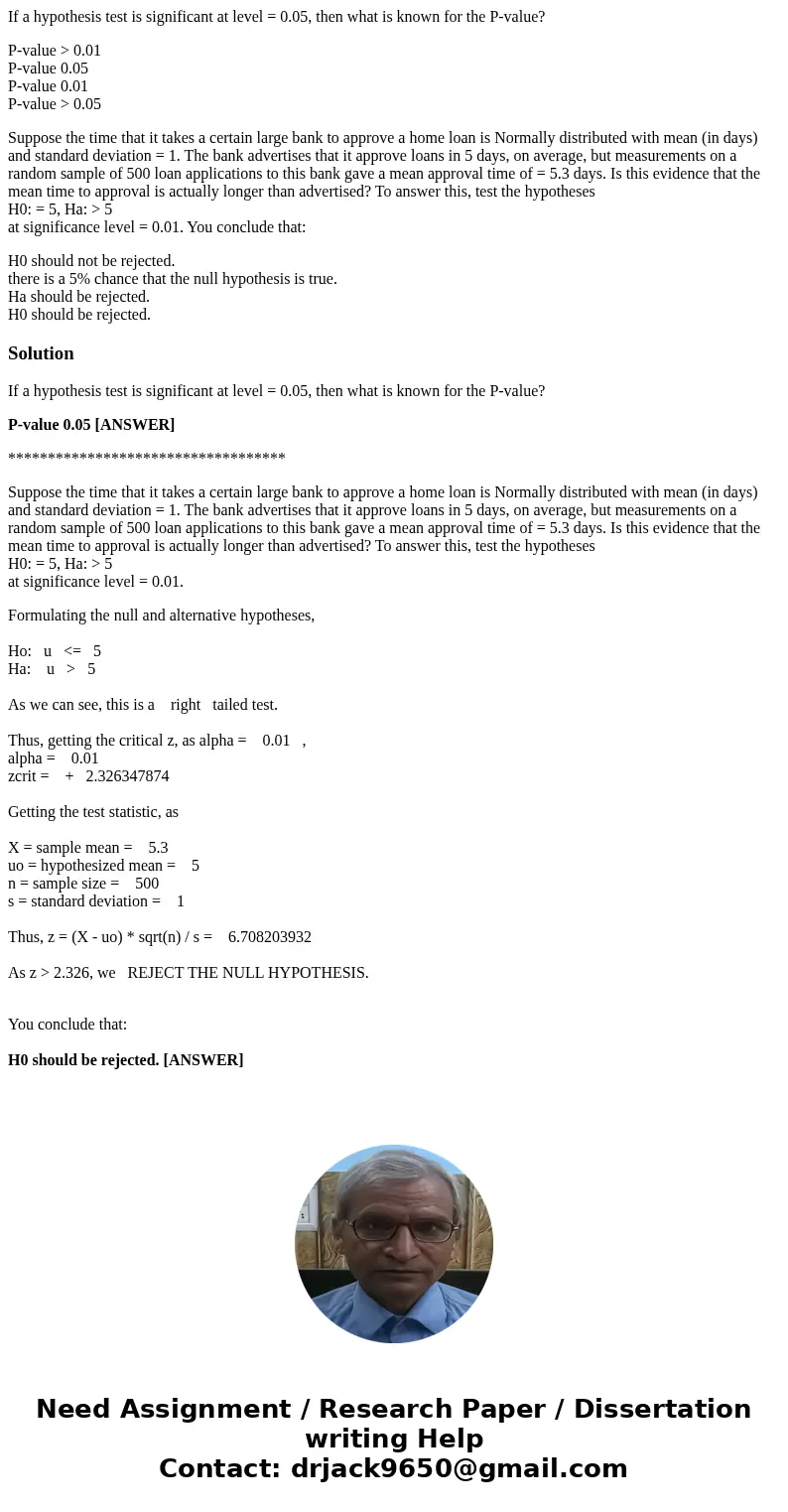If a hypothesis test is significant at level 005 then what
If a hypothesis test is significant at level = 0.05, then what is known for the P-value?
P-value > 0.01
P-value 0.05
P-value 0.01
P-value > 0.05
Suppose the time that it takes a certain large bank to approve a home loan is Normally distributed with mean (in days) and standard deviation = 1. The bank advertises that it approve loans in 5 days, on average, but measurements on a random sample of 500 loan applications to this bank gave a mean approval time of = 5.3 days. Is this evidence that the mean time to approval is actually longer than advertised? To answer this, test the hypotheses
H0: = 5, Ha: > 5
at significance level = 0.01. You conclude that:
H0 should not be rejected.
there is a 5% chance that the null hypothesis is true.
Ha should be rejected.
H0 should be rejected.
Solution
If a hypothesis test is significant at level = 0.05, then what is known for the P-value?
P-value 0.05 [ANSWER]
***********************************
Suppose the time that it takes a certain large bank to approve a home loan is Normally distributed with mean (in days) and standard deviation = 1. The bank advertises that it approve loans in 5 days, on average, but measurements on a random sample of 500 loan applications to this bank gave a mean approval time of = 5.3 days. Is this evidence that the mean time to approval is actually longer than advertised? To answer this, test the hypotheses
H0: = 5, Ha: > 5
at significance level = 0.01.
Formulating the null and alternative hypotheses,
Ho: u <= 5
Ha: u > 5
As we can see, this is a right tailed test.
Thus, getting the critical z, as alpha = 0.01 ,
alpha = 0.01
zcrit = + 2.326347874
Getting the test statistic, as
X = sample mean = 5.3
uo = hypothesized mean = 5
n = sample size = 500
s = standard deviation = 1
Thus, z = (X - uo) * sqrt(n) / s = 6.708203932
As z > 2.326, we REJECT THE NULL HYPOTHESIS.
You conclude that:
H0 should be rejected. [ANSWER]

 Homework Sourse
Homework Sourse